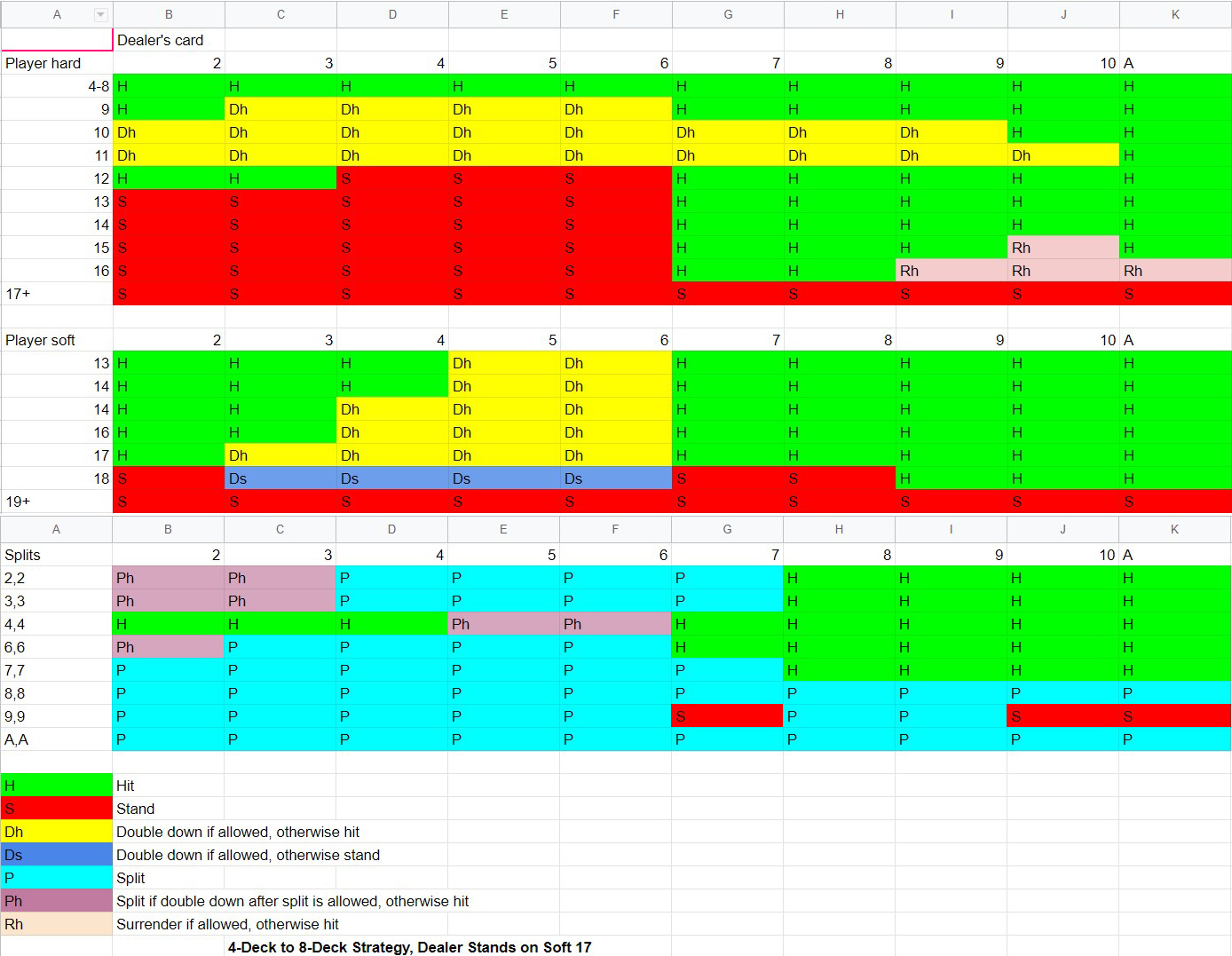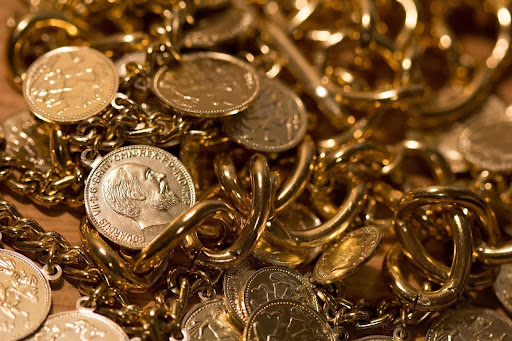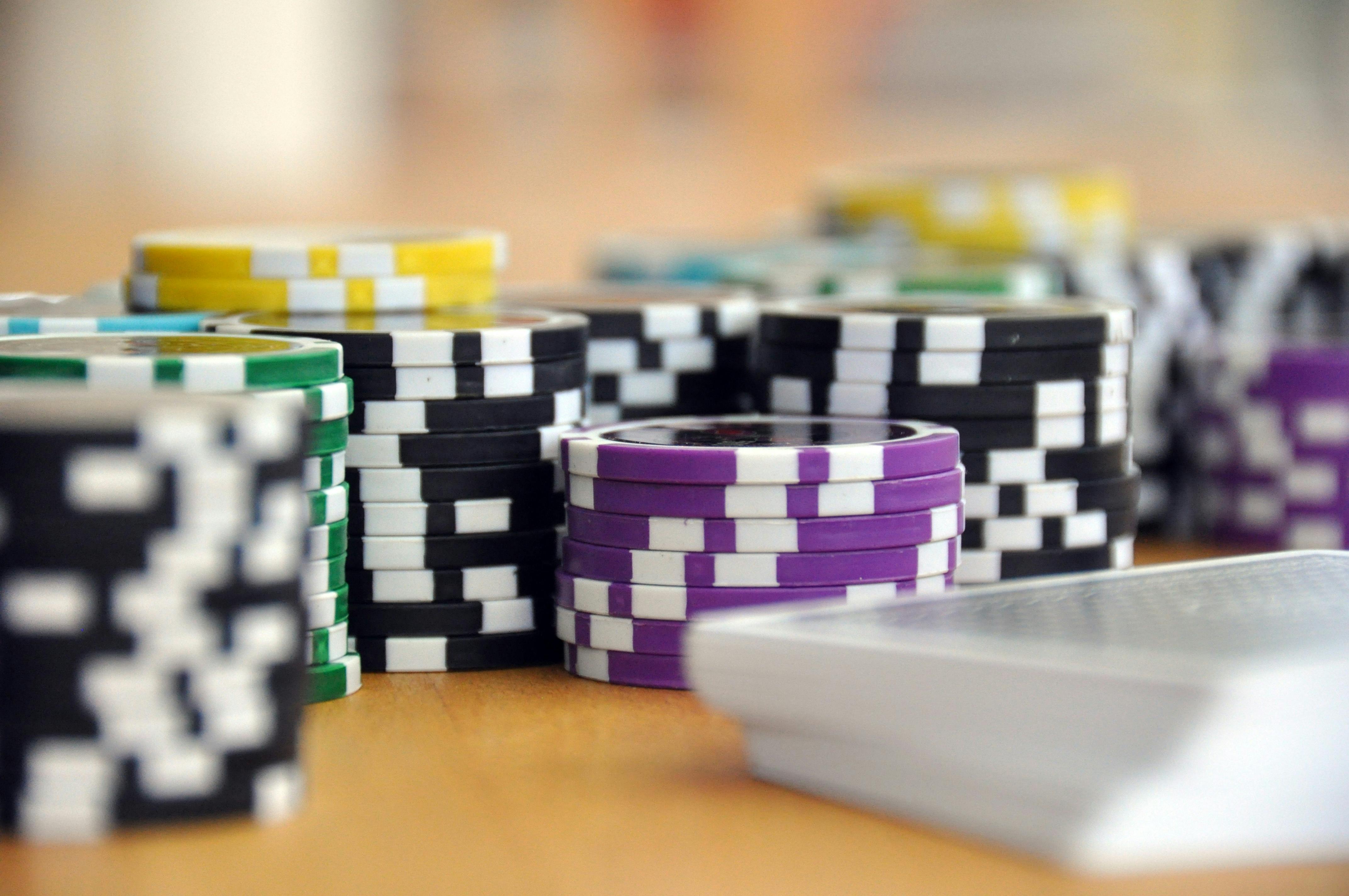Understand the odds of Blackjack: Improve Your Chances of Winning
The odds of Blackjack show how likely you are to win, lose, or end up with a tie in each hand. When I first started playing, understanding these odds helped me feel more confident because I could see what my chances were. If you know these odds, you can make smarter decisions while playing, like when to hit or stand, and avoid risky moves. This way, you can enjoy the game more and improve your chances of winning without relying only on luck. Think of it like learning the rules of a sport — it makes everything easier and more fun!
Scenario | Odds/Probability |
Winning | ~42% |
Losing | ~49% |
Tie (Push) | ~9% |
Natural Blackjack | ~4.83% |
Dealer Bust | - Dealer shows 2-6: ~35% - 43% - Dealer shows 7-Ace: <20% |
Player Bust | - 12: ~31%, 16: ~62% |
Deck Count Impact | - Fewer decks lower house edge (1 deck: ~0.17%, 8 decks: ~0.65%). |
Soft 17 Rule Impact | - Dealer stands on soft 17: reduces house edge by ~0.2%. |
Blackjack Payout | - 3:2 reduces house edge (~1.39%), 6:5 increases house edge (~1.45%). |
Basic Strategy Impact | - House edge drops to ~0.5% when using basic strategy. |
Basic Blackjack Odds Every New Player Should Know
Here is a summary of the odds of Blackjack that every player should know to improve their skills, judge situations, and make the right decisions to increase their chances of winning.
Odds of Winning, Losing, and Drawing
These are the basic odds every player should understand:
- Winning: About 42%. This means that, in total, players will win about 42% of the time.
- Losing: About 49%. The dealer has an edge as they must draw until 17, while players can stop anytime they feel confident in their hand.
- Drawing: About 9%. In this case, both the player and the dealer end up with the same total points.
Odds of Getting a Blackjack
The chance of getting a Blackjack (21 points) is only about 4.83%. Blackjack happens when you are dealt an Ace and a 10, Jack, Queen, or King in the first two cards, making a total of 21 points.
This is the strongest hand and is often paid out at a ratio of 3:2 or 6:5. However, the odds of drawing a Blackjack are quite low.
Odds of the Dealer Busting
The likelihood of the dealer busting (going over 21 points) is an important factor in deciding when to hit or stand.
- Dealer busts the most (35 - 43%) when the dealer has a low card (2 - 6). These cards are more likely to result in a bust because the dealer must draw additional cards to reach at least 17 points.
- Dealer busts less than 20% when the dealer has a strong card (7 - Ace). With these cards, the dealer is less likely to bust since they have a better chance of hitting a high total without going over 21.
You can better evaluate when to stop or hit by understanding the blackjack odds of dealer busting, especially when the dealer shows a low card and you have a moderate hand. Knowing the odds of the dealer making a mistake gives you the insight to decide whether to take a risk or play it safe.

You might interested in: Blackjack dealer bust cards
Rare Blackjack Odds to Spark Curiosity
You might find the rare odds in Blackjack surprising. These unique moments, like hitting specific hands or dealing with certain card combos, can shift your strategy and improve your chances of winning.
Odds of Getting a Pair
The chance of drawing a pair is about 7.5%.
Drawing a pair creates the opportunity for a side bet, such as Perfect Pairs (betting on the chance you’ll draw two identical cards). This odds of Blackjack adds an exciting element and strategy to the game, especially for those who like to try their luck with side bets.
Odds of Hitting 21 with 5 Cards (Five-Card Charlie)
The chance of hitting 21 points with 5 cards is less than 1%.
This rare situation is called Five-Card Charlie. To get 21 points with five cards, you need to draw cards without exceeding 21. Although the odds of Blackjack are very low, if it happens, it will be a memorable moment in your game.
What are Odds of Losing Multiple Hands in a Row?
Although each hand in Blackjack is an independent event and not affected by previous hands, losing multiple hands in a row can still occur. These blackjack odds of winning each hand emphasize the importance of bankroll management and not being overly influenced by a long losing streak.
- Probability of losing one hand: Approximately 49%, due to the dealer's slight edge.
- Odds of losing 4 blackjack hands in a row: 0.494 ≈ 5.7%.
- Odds of losing 8 blackjack hands in a row: 0.498 ≈ 0.3%
Discover Blackjack's rare odds helps you play smarter
What are Odds of Winning Blackjack Hands in a Row?
When you play Blackjack, each hand is independent, so the odds of winning multiple hands in a row decrease sharply. If you win one hand, your chance is about 42%. But for consecutive wins, it gets tougher:
- Winning 1 hand: 42%
- Winning 2 hands in a row: 0.42 × 0.42 = 17.6%
- Winning 3 hands in a row: 0.423 = 7.7%
- Winning 4 hands in a row: 0.424 = 3.1%
- Winning 5 hands in a row: 0.425 = 1.3%
You can see how the odds drop quickly. Winning streaks are exciting but very rare. So, while it’s fun to chase them, remember they’re more about luck than a predictable pattern.
How Game Rules Affect Blackjack Odds
The game rules significantly affect the odds of winning in blackjack for players. Each rule alters the house edge and impacts the player's chances of winning. Here's a breakdown of how common rules influence the odds in Blackjack:
Number of Decks
- Single-Deck: The house edge decreases by approximately 0.15%, as fewer cards improve the player’s chances of drawing a Blackjack (Ace + 10). This setup favors the player but is often offset by stricter table rules or higher minimum bets.
- Multiple Decks (4-8): The house edge increases by 0.5% to 0.6%, making it harder to form a natural Blackjack due to a diluted pool of high-value cards.
Dealer’s Rules (Soft 17)
- S17 (Stand on Soft 17): The dealer cannot draw additional cards, giving players an advantage. This decreases the house edge by approximately 0.2% compared to H17.
- H17 (Hit on Soft 17): The dealer's ability to hit on soft 17 adds 0.2% to the house edge, reducing the player's winning chances.
Payouts for Blackjack
- 3:2 Payout: A natural Blackjack pays 1.5 times the original bet, maintaining a lower house edge. This rule ensures fairness for the player.
- 6:5 Payout: The payout drops to 1.2 times the bet, increasing the house edge by a significant 1.4%, making it much harder for players to stay profitable in the long run.
You can significantly improve your chances of winning and reduce the house edge by choosing tables that use a single deck, follow the S17 rule, and offer 3:2 payouts. Always take a moment to review the table rules to ensure you're not at a disadvantage before playing.

Using Basic Strategy to Improve Odds
Basic Strategy is an optimal strategy that helps you make the best decisions based on their own hand and the dealer's hand. It is built on mathematical analysis to minimize the house edge as much as possible, typically reducing it to about 0.5% if the player follows it correctly. By using Basic Strategy, you can make more informed decisions about when to hit, stand, double down, or split based on the situation.

How to Apply Basic Strategy
To use the Basic Strategy chart, find the dealer's up card along the top row and your hand value in the left column. The intersection of the two will show you the optimal action, such as hit, stand, double down, or split. This is a simple way to play Blackjack more effectively.
Example: You have Hard 12 (6 and 6), and the dealer has an upcard of 4.
Step 1: Identify your hand type: You have Hard 12, a hand without an Ace.
Step 2: Check the strategy against the dealer's card: The dealer has an upcard of 4, a weak card. According to Basic Strategy, when the dealer shows a weak card, there's a high chance they will bust.
Step 3: Decide on the action: You should Stand and keep your hand, as there's a high chance the dealer will bust.
FAQs
- What are the best odds at blackjack?
Best odds of blackjack are with a single deck, where the house edge is around 0.17%. Playing with Basic Strategy improves your chances. - How does deck size affect blackjack odds?
Have more decks increase the house edge. Single-deck games offer better odds than multi-deck games (6 - 8 decks). - When should I double down or split my cards?
Double down on 9, 10, or 11 against a dealer’s weak card (2 - 6).
Split Aces and 8s to improve your chances.
You’ll improve your chances of winning by understanding the odds of Blackjack and using a Basic Strategy chart. When you know the probabilities of winning, losing, or drawing, and apply strategies like splitting and doubling down wisely, you make smarter decisions during the game. But always keep in mind, Blackjack is a game of chance, and no strategy can guarantee success every time.
















